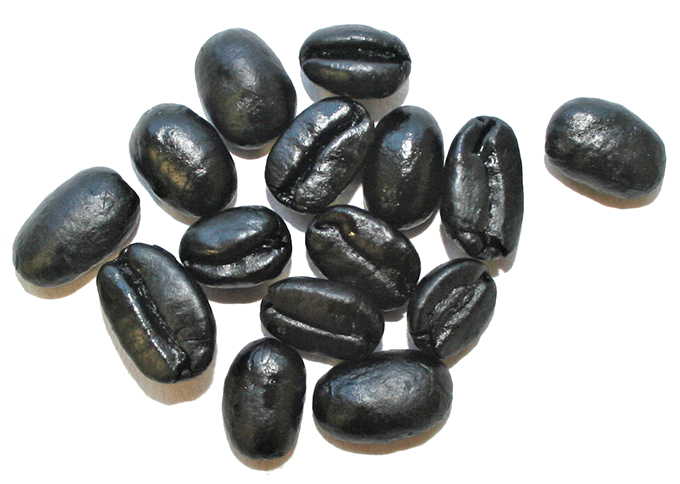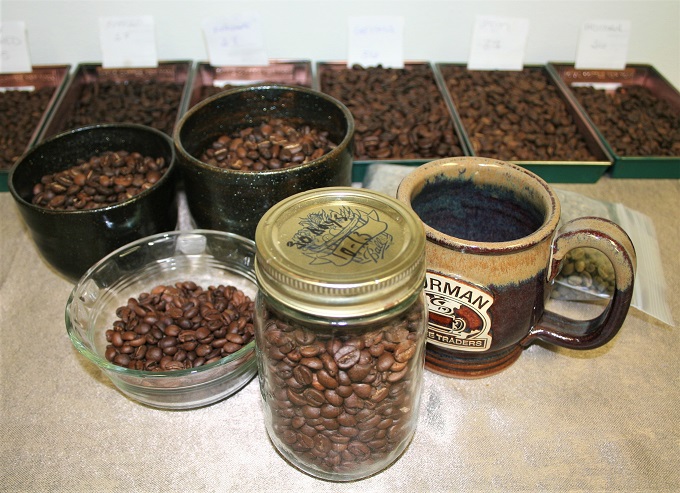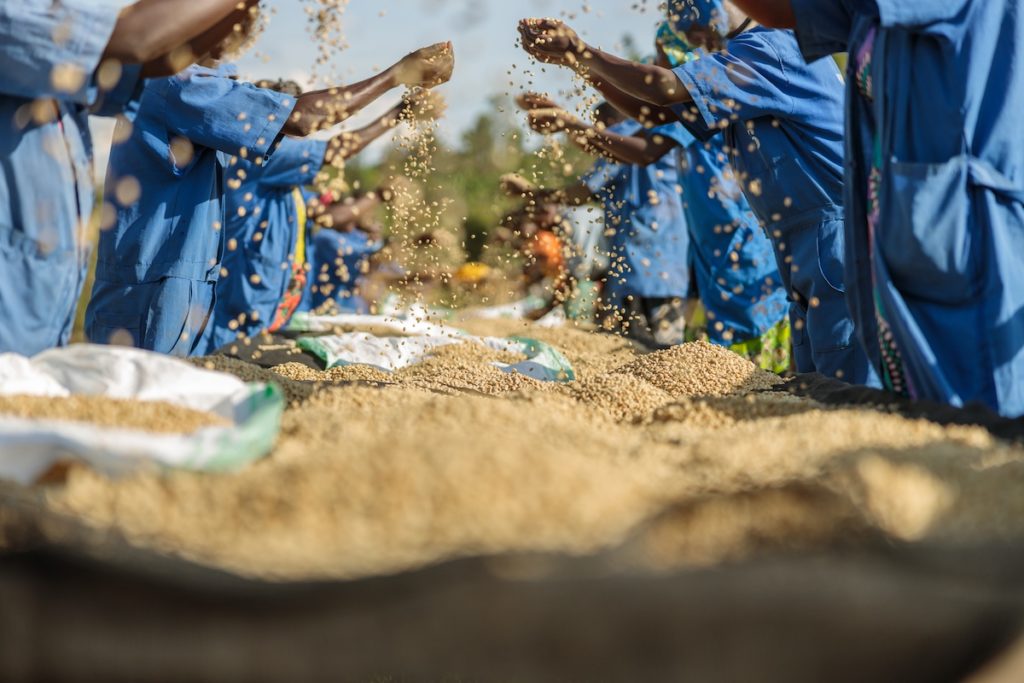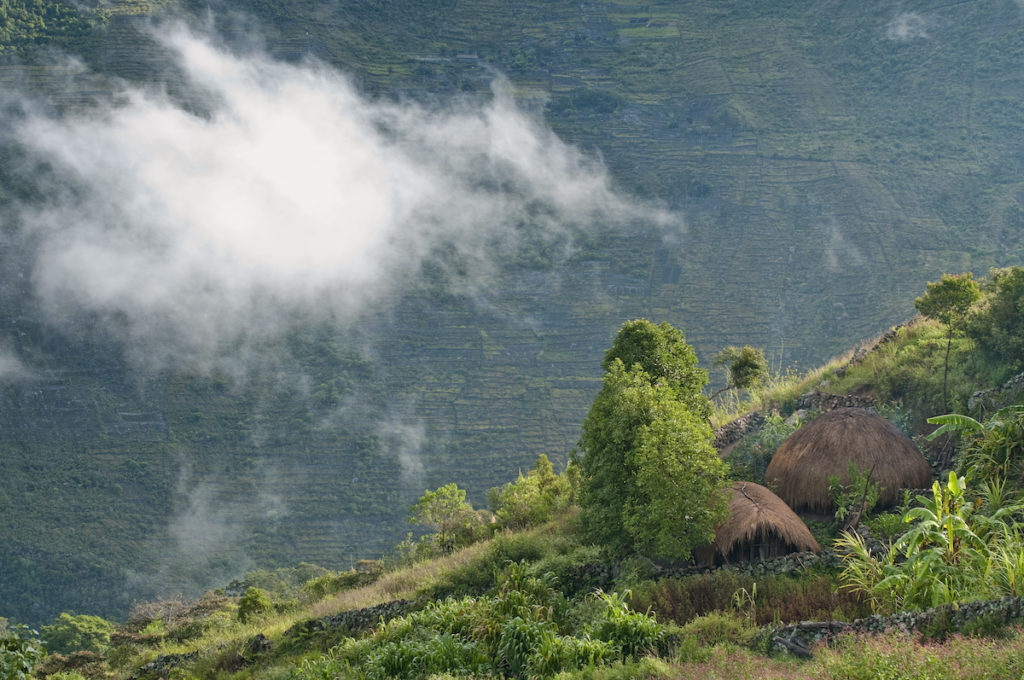Light Roasts
Medium Roasts
Medium-Dark Roasts
Dark Roasts & Espresso
Why “Set-up”?
More Information:
What is Home Roasting?
What is Green Coffee? What are
Green Coffee Beans?
What are Qualities of Good Coffee?
How to Choose Green Coffee Beans?
All Home Coffee Roasting Primers
Get Started:
Home Roasting for Beginners
Buy Premium Green Coffee Beans
Buy Home Coffee Roasters
All of us coffee fans have at some point felt mystified by the seemingly endless and arbitrary list of distinct roast styles. What are the differences between “City,” “City Plus,” and “Full City”? What do we mean when we talk about “American,” “French,” “Italian,” and/or “Vienna” roasts? And why is one “Espresso Roast” so much darker than another? This article will clarify common terms used to indicate roast levels, and what characteristics can be expected from each broad category.
There is very little standardization of terms for roast levels, which often causes confusion. We generally find that only professional roasters actually benefit from a perfect understanding of all the specific styles; for most coffee lovers, it is good enough just to know the differences between “light” and “dark” (and why we at BCT almost always go for “medium”).
A Wide Spectrum of Coffee Roast Styles
All roast styles fall within a spectrum from lighter to darker, but sometimes the differences between the most popular roast styles – like “City,” “City Plus,” and “Full City” – are so tiny that it is difficult to get a clear vision of the whole spectrum. For example, those names indicate internal bean temperatures ranging between 426-437º F, and the difference in roasting times may be less than 1 minute, but the perceived differences in body and flavor profile can be very significant. Most boutique coffees that we consume in the United States are roasted somewhere within this very limited range, while most bargain coffees are further into medium-dark range (but not nearly as dark as some cultures like them!).

“City,” “City Plus,” and “Full City” roasts – most boutique beans in the USA will be roasted within these levels
An experiment will help to clarify: treat the same beans with a City roast (426º F) and a Full City roast (437º F) – or just think of it as “two levels darker” – then taste-test them right next to each other, and you may be shocked by the big differences in body and flavor profile! But then give those beans a Cinnamon roast and a Spanish roast, and you may not even recognize them as the same coffee!
Viewed on the whole, all roasts will fall into one of four color levels, described below. Listed in parentheses are common names for specific roast styles falling within these broader color levels.

Since we cater to home roasters who are mostly figuring out their favorite roasts by trial and error and lots of fun taste-testing, rather than precision measurement of the internal temperatures of the beans, we recommend that you avoid stressing out about all the specific terminology – describing a roast level as “light” or “dark” rather than “New England” or “New Orleans” is just so much easier! But it can be fun to learn all the nuanced roastmaster vocabulary, so we have included popular names for specific roast levels. The designations listed in parentheses go from lighter to darker (though even this is debatable due to lack of standardized terminology). Those in italics are vague descriptors, less commonly used within the premium coffee world (though favored by the big cheap coffee companies), and quite frankly we do not know exactly what they mean, because everyone uses them differently!
Light Roasts
(aka “Half City,” “Blonde,” “Cinnamon,” “New England,” “Light City”)

After a few minutes you will hear the first “crack.” The beans will have visibly expanded in size and will be a brighter orange-brown color, dry with no visible oils. “Blonde” (second to left) or “Cinnamon” (third to left) roasts may not even make it to first crack with some beans – we generally advise against such light roasts because they may taste raw and vegetal or “grassy.” But some enjoy light roasts because they are significantly higher in caffeine – “Half City” (far left) roasts may be barely drinkable, but nowadays they are often used for trendy high-caffeine beverages.
Light roasts are sometimes preferred for milder coffee varieties, and often will exhibit more of the subtle nuanced “origin flavor” or terroir. Generally, coffees roasted to this level can be expected to be higher in acidity and lighter in body, and they may taste harsh and underdeveloped.
Beans from regions such as Ethiopia, Kenya, Hawaii, and Jamaica are often light-roasted so that their signature characteristics shine through in the cup.
Medium Roasts
(aka “City,” “American,” “City Plus,” also “Regular,” “Breakfast”)

Shortly after “first crack” but before the “second crack” occurs, the beans are considered to be within the medium roast range. Beans will be medium brown and still exhibit a dry surface, though they may appear to have a slightly more velvety texture. “City” (far left) roasts generally end shortly after first crack, “City Plus” (fifth from left) may require a couple of minutes longer, but at this point the roast level will progress much more quickly, so pay close attention!
Medium-roasted coffees are generally preferred in the United States. There will be sweeter tones than the light roasts and the body will present more balance in acidity, aroma, and flavor.
A good place to start with a new unfamiliar coffee, most beans taste good medium-roasted, and it will be easy to assess whether a lighter or darker roast may be needed to better suit the bean or your own taste preferences.
And we encourage you to experiment! Coffee culture in the US has not yet invented distinctive names for the smallest shade variations, as Europeans have given to their preferred dark roasts, but the best part about home roasting is that you can figure out exactly what roast point is perfect for each unique bean – and you can call it whatever you like!
Medium-Dark Roasts
(aka “Full City,” “Viennese” or “Vienna,” “Full City Plus,” also “Continental,” “European,” “After Dinner”)

Eventually, you will hear the beans begin their “second crack’”and you will see oils rising to the surface. The beans will become a rich, dark color and appear slightly shiny. “Full City” (far left) is still a few moments short of second crack, while anything beyond “Full City Plus” (far right) will progress beyond the second crack phase and well into dark roast territory.
At this level flavors will tend more toward spicy, chocolate, and dark berries, a lower-acidity full-bodied cup with abundant aromas and a drier finish, more like baker’s chocolate or fine wine.
Central American, South American, and Indonesian coffees typically taste very good at this roast point.
Dark Roast
(aka “French,” “Italian,” “Turkish,” “Neapolitan,” “New Orleans,” “Spanish,” also “High,” “Double”)

After second crack, beans will swiftly turn very dark – Spanish-roasted coffees are charcoal black – and very shiny – touch them and the surface will be noticeably oily. In the roaster, beans will begin to smoke as sugars carbonize.
Tastes will be smoky/sweet with lighter body. The darker the roast the less acidity will be perceived in the cup. Dark roasting will also decompose much of the caffeine, so dark-roasted coffees will have less stimulant effect than light-roasted ones (this is the reason why high-caffeine Robusta beans are often added to espresso blends).
Many beans lose their distinctive flavor profiles under the dominant smoky flavors of a dark roast, but we have found that Brazilian and Indonesian beans stand up very well to this treatment.

Burned coffee beans – if they look
like this in your roaster, hit the
cool cycle before they start on fire!
Historically, mainstream tastes have tended toward the dark end of the spectrum (dark roasts are more reliable for consistent commercial coffees, simply because they blast all the unique flavors out of the beans) and therefore there are a lot more designations for incrementally darker roasts. The differences between “French” (far left) and “Spanish” (far right) roasts are actually much less than the differences between “City” and “City Plus” roasts. If you like a specific level within this range, be sure to pay very close attention to your roaster – once the beans get up to these high temperatures, they will be moving into the next roast level every few seconds!
“Espresso Roast” : We would like to note that there is no such thing as an “Espresso Roast.” Espresso is a brew style, not a roast style. It can be very tricky to guess the exact roast level of coffees labeled “Espresso Roast,” because every roaster has their own idea of what that means. But they typically reside within a predictable range – most beans intended for espresso are roasted medium-dark to dark (“Vienna,” “French,” “Italian,” or “Continental” roasts are all commonly used for espresso).
Also note that because coffees intended for espresso are usually a special blend of beans from different regions, challenges may arise due to inconsistencies in roasting times. For example, you may notice that our BCT Espresso and Jumpstart blends will roast up with some beans a little darker, some a little lighter – but don’t worry! – these are carefully crafted recipes that provide deep and balanced flavor profiles, and they are supposed to look that way.
An important note about “Set-up”:
A crucial detail often neglected when first learning about home coffee roasting is that freshly roasted coffee beans will off-gas carbon dioxide for several days, up to several weeks (and after this off-gassing is finished, they are considered stale). Carbon dioxide stored in the beans creates carbonic acid when it combines with water. This means that freshly roasted beans will taste more acidic than those that have rested or “set up” for a few days.
This part requires no work or attention – just put them in a bowl immediately after roasting and let them air out at room temperature. For most beans, we recommend letting them set up for at least 24 hours, up to a week or more, depending on the variety and your preferences. It can be really fun to experiment with the set-up curve – roast on Monday, then savor a sharp intense flavor profile on Tuesday, a milder medium-acidity cup on Thursday, and more balanced mellow tones on Saturday!
Often, we roast just enough to always have one fresh batch, but if you prefer to roast more and want to keep the beans fresher longer, simply put them in a sealed container after they have set up. Mason jars are preferred, but any reusable food storage container will suffice. Plastic bags must be the type with one-way valves, or else they will puff up with gases. Store at room temperature to maintain optimal moisture – refrigerators are too damp, freezers too dry. Please note that although you can slow the process with a sealed container, there is nothing that you can do to stop freshly roasted coffee from going stale – except to brew and drink it!

Read more Home Coffee Roasting Primers: Coffee Regions, Coffee Cultivars, and Coffee Processing Methods




Hi, I see a lot about having the coffee “rest” or “set up” after roasting but not a lot about how. Does that mean open to the air? Sealed? Sealed with a one-way valve? What specific environment is best for set up? Thanks
Thanks for asking! Just like in the photo, let them air out at room temp.
Most coffees want at least 24 hours of set-up (I often find that I like about 3 days), and then you can put them in a sealed container and continue storing at room temp. For longer storage or gifting to friends, valve bags are good, but for most of us simple solutions like a mason jar work just as well.
Happy roasting!
– tyler
PS – thanks for noticing that omission. I have added a little more to the final section. Please dont hesitate to ask if you have any other questions.
What about setting up in a larger coffee grinder hopper?
I enjoyed reading your piece. I use the Behmor 1600. I sight and smell roast but try too emulate the temperatures. My indicated temperatures are about 120 – 140 lower than listed bean roast values. The difference being placement of thermocouple I’m sure. I tend to under-roast probably. Due to fear of burning out the flavors. Along with your observation that roasting progresses more quickly at higher roast level and what I find is a long scary quiet time between 1c & 2c. I think with the encouragement I found in your writing I’ll manually drop to lower input heat and search for 2c more. I’d say all my roasts are late 1st crack to just quiet. I’ll try to be more mindful of rest times. I’ll rarely rest my roasts more than a few days to a week.
Thanks a lot for that great overview! I developed a habit of mixing different roast levels of my single origin (mostly Columbian) with 3 lbs into the second crack and 2 lbs after the first crack. I know professional roasters don’t do that, but is that done more often by home brewers?
I’ve been using a Gene Cafe’ for about a year. Before that I used a corn popper for about 7 years. One thing that I noticed with the Gene cafe’ is that is heats up so slow that I never actually hear a first crack. Don’t know if this is necessarily bad, but I had difficulty knowing where I was at in the roast cycle and I don’t think it throws off the chaff as well. Surprisingly, though I can hear second crack over the machine noise. Is the slow heat up detrimental or limiting my roast??
I find it interesting when you said that most people in the country would usually choose medium-roasted coffee. Because of that, commercial fluid bed coffee roasters that companies should use should specialize in that kind of level. It’s to ensure that they will be able to achieve the flavor that the people are looking for to have more sales once they put out their product to the market.
Prior to Really reading about set up times I thought “set up” took place in a sealed bag with a valve. I now know better… thanks for clarifying.
Genie 15 minutes @ 450 for large cherry .14.5 minute for NG peanut @ 450 works for me!!!